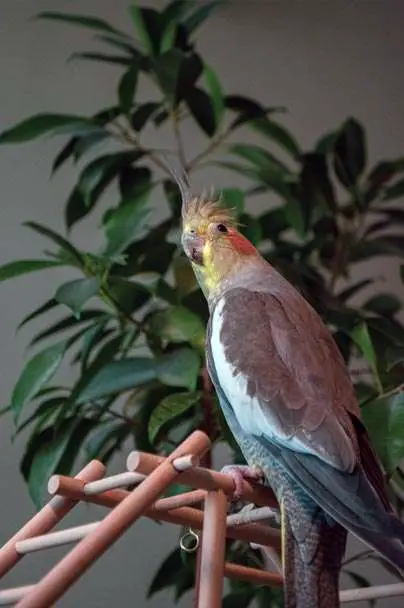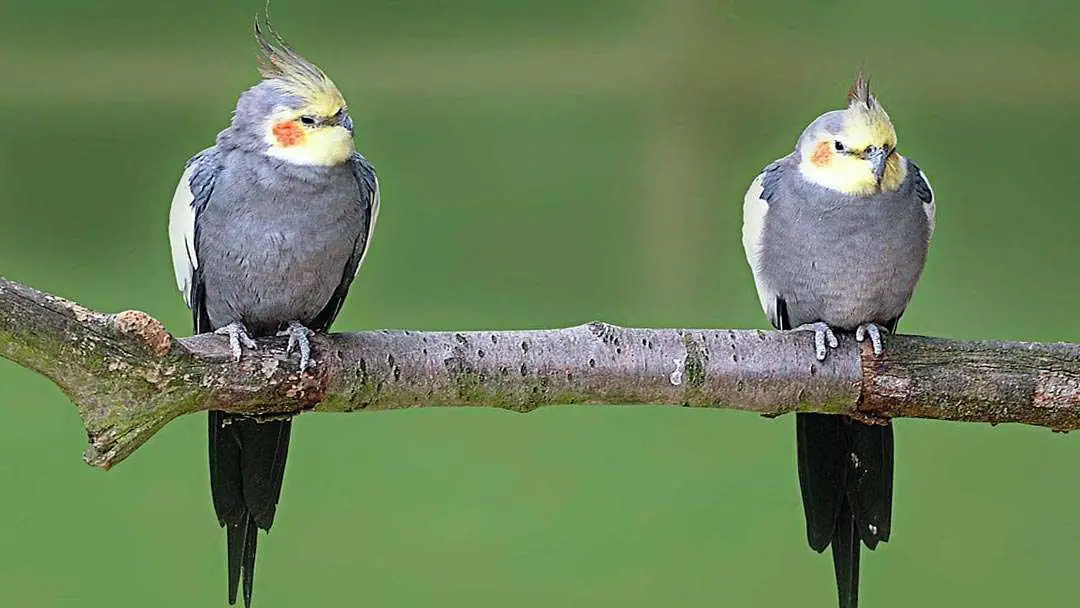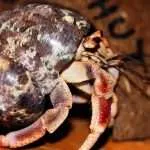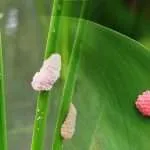The lifespan of a Cockatiel – just like any other pet you keep – largely depends on your level of care, your level of attention to the bird, the diet, how happy or content your bird is and exercise level of your bird.
If your Cockatiel gets adequate care from you, it will live into its twenties – and you may be lucky it gets into its thirties.
Want to know more about the Cockatiel? Continue reading to know more about the Cockatiel and everything that improves its lifespan.
Meet the Cockatiel
The Cockatiel is one of the most popular parrots in the United States. The Cockatiel, which was first discovered in Australia, became popular due to domestication.
This bird belongs to the family of the Cockatoo and can be kept as a pet. Also, they are great beginner bird for people who love birds and love to own one.
Overview
| Family: | Cacatuidae |
| Kingdom | Animalia |
| Phylum | Chordata |
| Order | Psittaciformes |
Features of the Cockatiel
The Cockatiel is brightly colored parrots that can do almost anything you teach it to do.
They are small, cuddly and easy to handle. You can have them on your shoulder while you carry out other tasks.
They are a social animal, very friendly and connect easily to its owner – that’s for owners who bond with them.
The Cockatiel will only connect to one person even if you surround it with different people.
The Cockatiel is an intelligent animal. Like I said earlier, they can do almost anything you train it to do – they can sing, dance and some will even talk.
The Cockatiel needs a lot of attention – it loves attention. When left alone – to be by itself for a long time – the Cockatiel may become depressed and aggressive because there’s no one or no partner to socialize with.
With this information, it’s important to note that if you’ll not be interacting or bonding a lot with your Cockatiel, you must get it a playmate – another Cockatiel.
Size of the Cockatiel
The size of the Cockatiel is usually around 13 to 14 inches and its body is largely made up of its tail. The average size of the Cockatiel is 32cm while its average weight is 90g.
The lifespan of the Cockatiel
When left in the wild, the Cockatiel may live up to 10 to 15 years but when kept as a pet, it can live into the late twenties.
Like I earlier mentioned at the beginning, the lifespan of the Cockatiel largely depends on the care the pet parent gives to it.
Attention must be paid to what the Cockatiel eats, its health, social connection with pet parent or partner and exercise level.
A Cockatiel can live long into its 30s although it’s very uncommon.
Diet of the Cockatiel
When left in the wild, the Cockatiel feeds on a variety of foods, not just seeds. As such, it will be very wrong of you to feed your Cockatiel only seeds and expect it live a long-lasting and healthy life.
A major diet of the Cockatiel is pellets, which are tailor-made or can be tailor-made for your type of bird.
Pellets should take 70% of your Cockatiel’s diet while 30% should take seeds, fresh fruits, and vegetables.
You can give your Cockatiel sweet potatoes, carrots, apple, vegetables, bananas, and tomatoes – which are great for Vitamin A.
You must not give your Cockatiel – or any bird – avocadoes because it is unable to digest it easily. Also, your Cockatiel shouldn’t take salt, onions, chocolates, and caffeine, they are toxic for your bird.
Fresh and clean water is very important to the diet of your bird. Always leave a bowl of freshwater in the cage for drinking and for playing.
To know what diet works best for your Cockatiel, a visit to the vet will help.
Cockatiels lifespan & Health Issues
Your bird will get sick, just like you do too. It is usually best to avoid these health issues than threating the lifespan of your cockatiel.
And, you can only prevent illness for your bird by visiting a vet, bearing in mind that Cockatiels don’t show signs of illness on time until they are sick.
Cockatiels suffer bacterial infection, nutritional deficiencies and also aging problems.
Your bird will, however, show signs that will tell you something is wrong. Therefore, look out for signs such as reduced appetite, discharge from mouth and nose, weight loss, sneezing, runny droppings for more than two days.
These signs show that your bird is ill and needs the attention of a vet.
Cockatiels also suffer from kidney failure, atherosclerosis (a medical condition in which the arteries become small and hard as the result of excess fatty deposits) which are associated with aging.
X-rays, blood and stool diagnosis can be carried out after adoption to know the health status of your cockatiel or conditions that may affect its lifespan.
Cockatiels and Egg Binding
Another condition that threatens the health and lifespan of female Cockatiels is a condition called egg binding.
Cockatiels are very active in reproduction and can lay eggs every 48 hours. Female Cockatiels can lay up to 30 eggs at a time.
Now, egg binding is when the eggs get stuck in their reproductive tract and this can lead to paralysis.
When this happens, you must see a vet to help you out and also to advise you on how to prevent future occurrence.
If proper attention is paid to your birds’ health, you’ll know when something is not right with your cockatiel.
Caring for your Cockatiels
Below are some care tips for your Cockatiel.
Cage Size and Design
As a bird pet, a cage will be needed as the habitat of the bird.
Your bird should be allowed to fly occasionally but a cage will keep it safe but this doesn’t mean your bird should spend most of its time in the cage.
The cage size of your bird should be wide – you should measure the wings of the bird and get a cage bigger than the wing size.
The cage should have a variety of perches – where your bird can stand on. The perches should come in varying thickness.
If the perches have the same thickness size, it’s going to affect the feet of your bird by putting pressure on the same spot.
You can also have a perch with you when you take the bird out of its cage.
Also, you can keep toys in the cage to keep them mentally stimulated and engaged.
When in the wild, the Cockatiel will get engaged in different activities, so you shouldn’t starve it of this.
Cage lighting, Ventilation, and Placement
Lighting is also important for the cage. You’ll need to install an ultraviolet light which will serve as a source of vitamin D to their skin.
Cage placement is important. Don’t locate the cage of your bird in an isolated place.
Keep in mind that your Cockatiel is a social animal and loves to get involved with varieties of things. As a result, the cage should be kept where you spend most of your time or where the family spends most of the time.
Even if you’ll be getting a partner for your bird, the cage still should be kept where the family is – living room, dining room anywhere not isolated and not dark.
Do not keep the cage in the kitchen. Most birds are affected by cooking fumes which may kill the bird.
Cockatiel and Ventilation
Your Cockatiel must get a lot of fresh air and ventilation.
Last note on the cage, you necessarily don’t need to cover the cage with a blanket or clothe when it’s night.
Your Cockatiel can tell when it’s day time and when its night time. At least that’s how they live in the wild.
One last thing, I promise it’s the last on the cage, the cage should be clean at all times.
From time to time, you should clean the cage of spilled food, stool, and spilled water. Just make sure the cage is clean otherwise your bird will get sick over time.
Bonding
You can only get to know the personality of your Cockatiel by bonding with it. You can achieve this by creating and spending time with your bird.
This is the only way your Cockatiel will know you and you also know your bird – what works for your bird and what doesn’t work for your bird.
The Cockatiel loves attention and you should give it attention. They love physical touch, cuddles – just attention.
The bonding, the attention you give your Cockatiel will leave it happy and healthy.
Choosing your Bird
If you want to adopt a Cockatiel, male Cockatiel is best to adopt because the female Cockatiels are very aggressive compared to the male.
But if you can handle a female, you can go ahead and adopt one.
Social Behaviors
Cockatiels get bored easily and this can lead to depression when left alone for a long period.
A Cockatiel will pull out its feathers, bang its head against the cage, become angry and even refuse to eat if depressed.
So, watch out for these signs and do the needful as soon as you see the warning signs.
Male Cockatiels are more nurturing than females. Unlike other bird species, the male Cockatiel can take care of the new-born and keep them safe from danger.
Watch your utterances when around a Cockatiel as they can mimic repetitive sounds.
The breeding season for the Cockatiels is usually between July to December. The incubation period lasts for 19 days while the nestling period lasts for 30 days.
If you want a quiet Cockatiel, adopt a female but if you want the noise – singing and whistling – adopt a male.

Due to its natural habitat, female Cockatiels are quiet because they listen to the male who makes use of their vocal skills to attract the female.
Training the Cockatiel to perform certain skills requires effort. It’s easier to develop skills in a young Cockatiel than an adult Cockatiel.
You can cut, or trim, the wings of your Cockatiel, although, this is largely your decision to make.
However, it’s advisable to trim the wings if you’ll be leaving your bird to fly occasionally.
And you know, when you leave your bird to fly about, it might run into things – including the fan – because it is not in the wild. It could get hurt or die.
A word of Caution…
If you’ll be getting a Cockatiel and another type of bird, don’t keep them in the same cage. You can only keep two Cockatiels in the same cage.
Cockatiels can be feisty and aggressive toward other birds.
You’ll need to trim the nails of your bird every couple of months.
But you need to know how to go about this else you’ll inflict pain on your bird without knowing.
In conclusion, the Cockatiel bird is easy to have and maintain. You just need to pay attention to your bird and make sure your bird maintains a healthy lifestyle.
Only then can you improve the lifespan of your cockatiel and have it with you for two decades or more.








